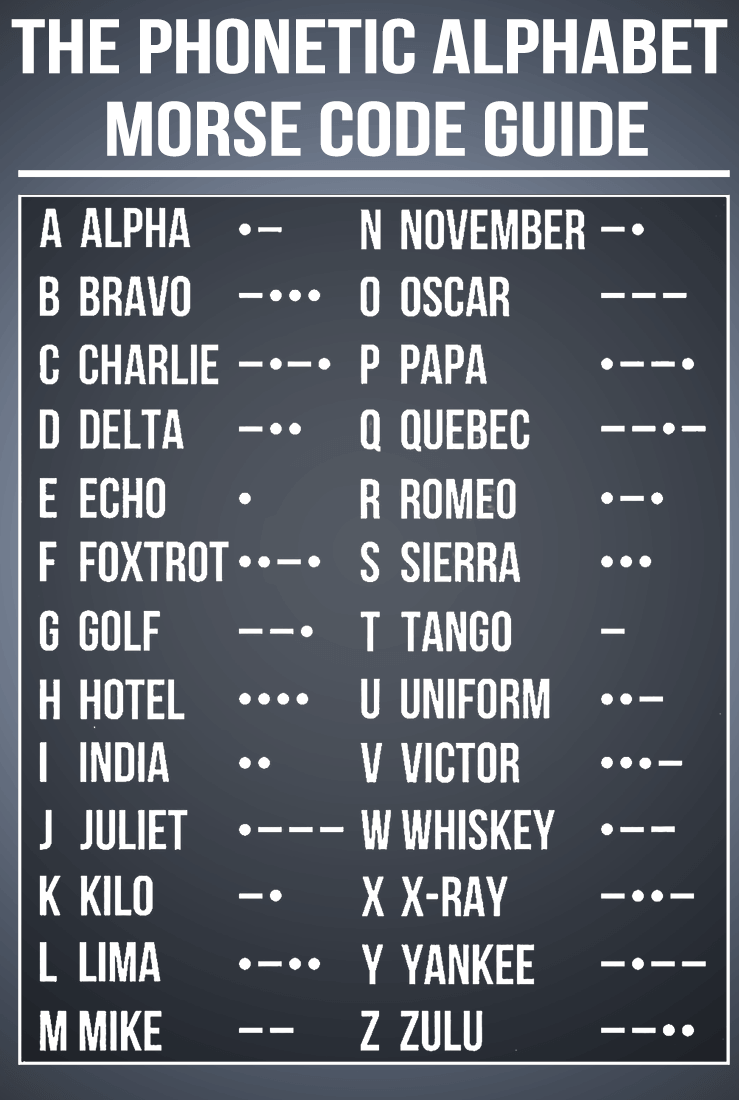NATO Phonetic Alphabet (Alpha - Bravo - Charlie)
NATO Phonetic alphabet from A to Z?
The (International) Radiotelephony Spelling Alphabet, commonly known as the NATO phonetic alphabet, is the most widely used set of code words for communicating our spelling alphabet.
To establish the code, various international agencies strategically assigned 26 code words to each letter of the Roman alphabet, ensuring clear distinction between letters and numbers during communication over radio and telephone.

A: Alpha
B: Bravo
C: Charlie
D: Delta
E: Echo
F: Foxtrot
G: Golf
H: Hotel
I: India
J: Juliet
K: Kilo
L: Lima
M: Mike
N: November
O: Oscar
P: Papa
Q: Quebec
R: Romeo
S: Sierra
T : Tango
U: Uniform
V: Victor
W: Whiskey
X: X-Ray
Y: Yankee
Z: Zulu
The NATO phonetic alphabet is frequently used in boat-to-boat communications through VHF radio, helping to avoid misunderstandings when relaying essential information to search and rescue teams during emergencies.
Clear communication is essential in military, aviation, maritime, and emergency operations. When messages are transmitted over noisy radios or between people with different accents, even small misunderstandings can have serious consequences. To prevent confusion between similar-sounding letters—like “B” and “D” or “M” and “N”—the world relies on the NATO phonetic alphabet, a standardized system that assigns a distinct, easily recognizable word to each letter of the English alphabet.
Origins and Evolution
The modern NATO phonetic alphabet has its roots in the early 20th century. During World War I and II, both the Allied and Axis powers developed their own phonetic systems to ensure radio clarity in the chaos of combat. However, these systems were not standardized across nations. For instance, the U.S. Army used “Able, Baker, Charlie, Dog…” while the Royal Air Force used “Ack, Beer, Charlie, Don…”
After the war, the need for a single, international standard became obvious—especially as global aviation expanded. In 1951, the International Civil Aviation Organization (ICAO) created a new alphabet based on linguistic research, intelligibility tests, and cross-cultural pronunciation trials. This version was adopted by the North Atlantic Treaty Organization (NATO) in 1956, giving it the common name we use today: the NATO phonetic alphabet.
The Numbers
The NATO system also includes standardized pronunciations for numbers to reduce confusion. For instance, “nine” is pronounced “niner” to avoid being mistaken for “five.” The full number list is:
Zero, Wun, Too, Tree, Fower, Fife, Six, Seven, Eight, Niner
Each pronunciation minimizes ambiguity in radio communication, especially over static or poor-quality transmissions.
Why It Matters
The NATO phonetic alphabet’s primary strength lies in its universality. Whether used by a pilot in Canada, a naval officer in Japan, or an emergency responder in France, it delivers a shared linguistic framework that transcends accents and native languages. It’s particularly vital in:
-
Military operations: ensuring precise orders and coordinates
-
Aviation and air traffic control: confirming flight numbers, tail codes, or waypoints
-
Maritime communication: transmitting vessel names and call signs clearly
-
Emergency services and police: spelling names, addresses, or license plates over radios
-
Telecommunications and customer service: clarifying letters in serial numbers or passwords
The system prevents costly or dangerous errors. For example, the difference between “B-17” and “D-17” could mean misidentifying an aircraft; the difference between “Mike” and “November” could mean mishearing a crucial grid reference.
Enduring Legacy and Everyday Use
Beyond professional use, the NATO phonetic alphabet has entered everyday language. It’s often used by civilians to spell difficult words over the phone (“My name is Paul—Papa, Alfa, Uniform, Lima”). It’s also a fixture in pop culture, from military movies to online gaming and aviation simulators.
Its simplicity and efficiency are why the alphabet has remained unchanged for nearly seventy years. Attempts to modify or replace it have been rare, as global institutions—from the United Nations to commercial airlines—depend on its consistency.
Want to learn more about boating safety, VHF radio use, navigation rules, and essential on-water skills? Take our complete boating safety course. It covers communication, emergencies, equipment, and safe operation, giving you the knowledge and confidence you need. Finish the course and earn your official boating license.